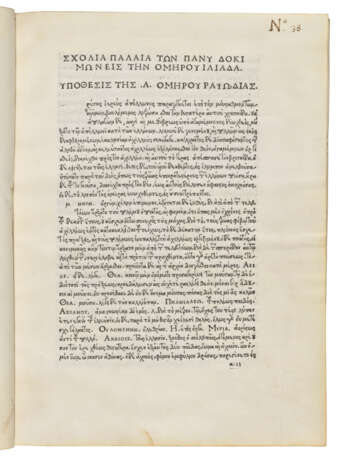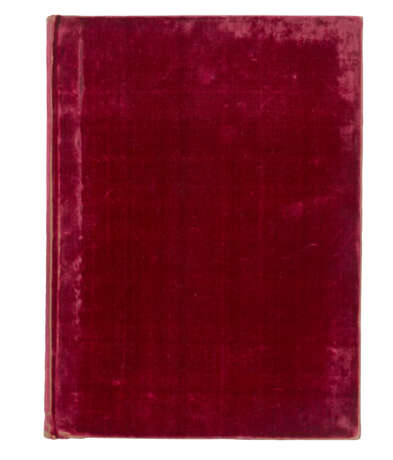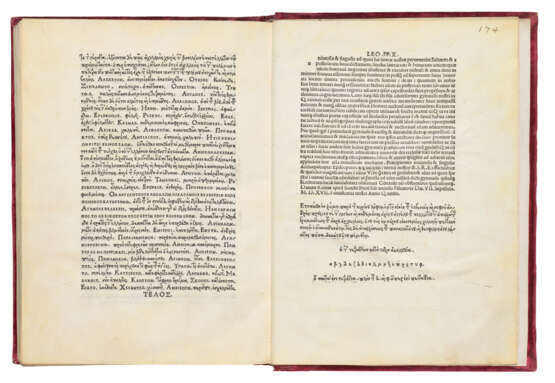ID 1349795
Lot 112 | Homer (c. 8th century BCE)
Estimate value
£ 50 000 – 80 000
[Commentary on the Iliad:] Homeri interpres pervetustus, in Greek, edited by Janus Lascaris (1445-1535). Rome: press of the Collegium Graecum [Vittore Carmelio and Zacharias Kallierges? for Angelo Colocci], 1517
The only vellum copy known of the first edition of ancient commentary on the Iliad – ‘the oldest surviving stratum of Homeric scholarship’ (Dickey, Ancient Greek Scholarship, 2007) – and first book printed at the Collegium Graecum. The college was established at Rome by Pope Leo X in 1513 for the education of young Greeks. It was directed by Lascaris ‘arguably the greatest of all Greek scholars’ of his generation (Barker), and 5 books were printed at its press between 1517 and 1520 for Angelo Colocci, in whose house it was situated. All of its editions are printed in types cut by Zacharias Kallierges and used by Lascaris for works he had produced at Florence; he presumably brought the matrices or punches with him to Rome (Barker, Greek Script & Type). Kallierges is named in the last Collegium edition and is thought to have acted as director of the press, likely assisted by Vittorio Carmelio. Carmelio is described as magister stampator Graechus in a document in the Vatican archives recording that he received a salary from the Vatican from 22 September 1515 until 30 July 1517 (Anthony Hobson, ‘The printer of the Greek editions “In Gymnasio Mediceo ad Caballinum montem,'" in Studi di biblioteconomia e storia del libro in onore di Francesco Barberi, Rome 1976, pp. 331-335).
The text is known as the Didymus scholia, one of the 3 most important ancient commentaries on Homer; its group is considered the oldest and largest. Once ascribed to the 1st-century BCE author Didymus, they are now accepted as originating in the 5th and 4th centuries BCE. Hoffman, Bibliographisches Lexicon der gesammten Litteratur der Griechen (1839), p.322.
Printed on vellum, folio (266 x 198mm). Greek and Latin types (a few very minor repairs at lower margins, very occasional small marginal wormhole, scattered light marginal staining). 19th-century scarlet velvet over pasteboard (some light wear); folding buckram box. Provenance: ‘No. 38’ written at top right corner of a2 – circular stamp removed from a1 – Francis Kettaneh (1897-1976; sale, Paris, 20 May 1980, bookplate) – Bibliotheca Philosophia Hermetica, Amsterdam (sale Sotheby’s 6 December 2000, lot 63; bookplate) – Livio Ambrogio (bookplate).
| Place of origin: | Italy, Europe |
|---|---|
| Auction house category: | Books and manuscripts, Printed books |
| Place of origin: | Italy, Europe |
|---|---|
| Auction house category: | Books and manuscripts, Printed books |
| Address of auction |
CHRISTIE'S 8 King Street, St. James's SW1Y 6QT London United Kingdom | |
|---|---|---|
| Preview |
| |
| Phone | +44 (0)20 7839 9060 | |
| Buyer Premium | see on Website | |
| Conditions of purchase | Conditions of purchase |





